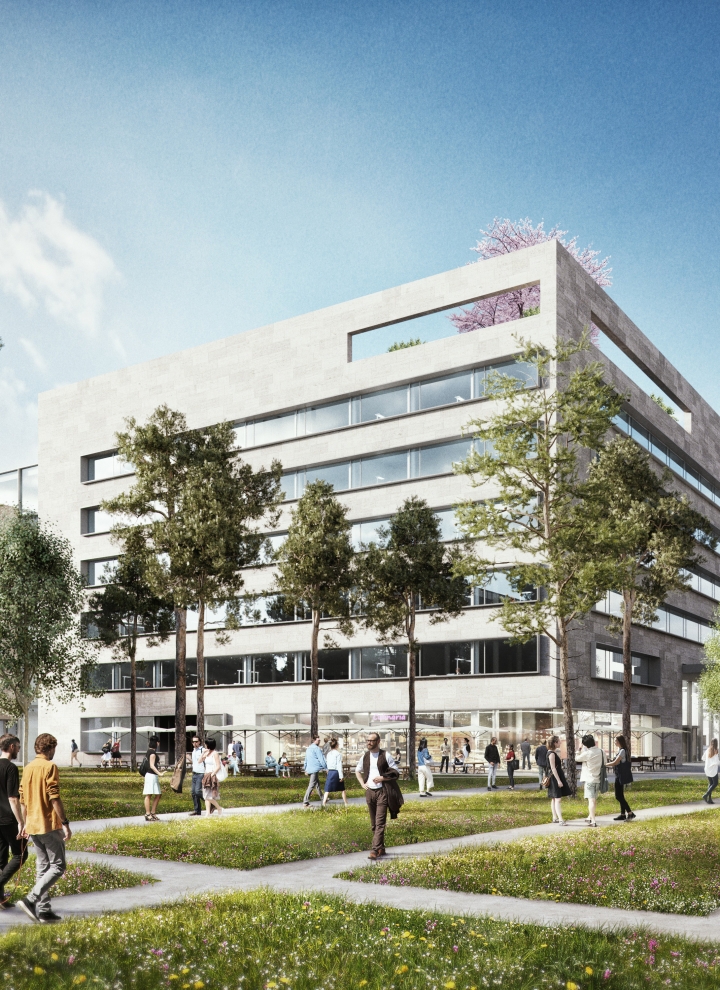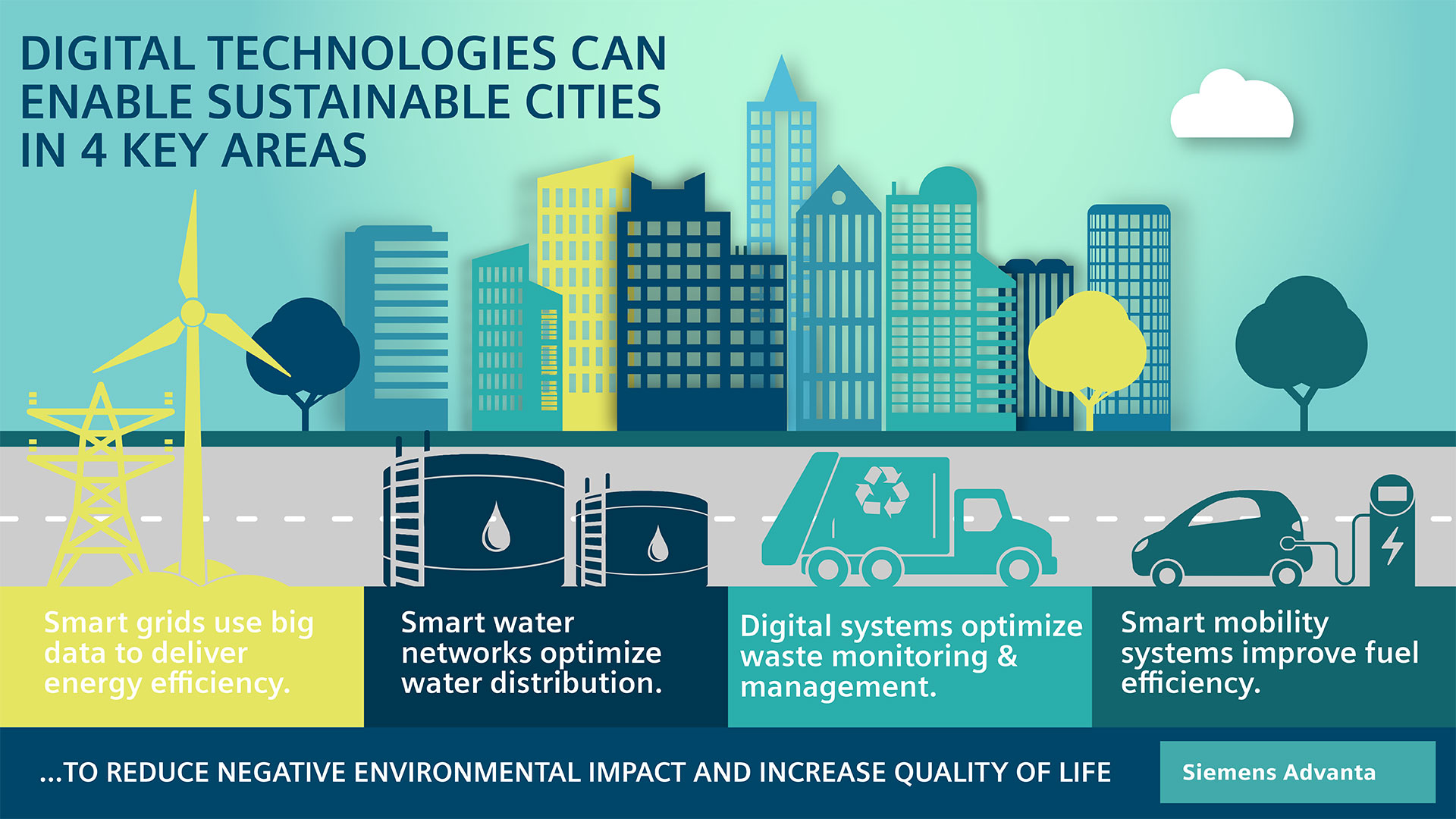
Let's Choose Green: The Technology Behind the Sustainable Cities of the Future

Listen to the blog here:
Expo 2020 Dubai is proving to be an event of epic proportions. With representation from across the world and a focus on innovation and collaboration, the six-month event is a platform for important global conversations. One of the core themes at Expo 2020 is sustainability, a concept that’s been literally built into the event’s DNA.
The Expo site, which covers a massive area of four-square kilometers and takes up twice the size of Monaco, was built as an exemplary city putting urban sustainability and resilience to the test. It’s a showcase of what a sustainable city can look like and a place where city leaders can exchange ideas on how to transform the way we envision cities in the future.
The world has been talking about smart and green cities for a while now, but in order to truly understand what that means, we need to take a deeper look into the ever-evolving relationship between cities and technology. How do we utilize technology to design living environments that best serve the needs of their citizens, and what’s the role of data in that process?
1. What is a sustainable city?
Let’s start with a definition. A sustainable city is one that incorporates environmentally friendly practices, green spaces and supporting technologies to reduce its negative impact on the planet. However, the term ‘sustainable’ goes well beyond the environmental impact. A city is truly sustainable when it offers its citizens services that improve their short and long-term wellbeing – while fostering its own resilience.
This approach is exemplified by the city of Dubai, which was recently named the most resilient city in the world by the United Nations Office for Disaster Risk Reduction. Supported by Siemens Advanta, the municipality has been strengthening its digital infrastructure and service set-up to better address environmental sustainability requirements and improve the experiences of its citizens and visitors. As of now, the city’s refined digital landscape has led to a 30% cut in costs as well as a 20% improvement in resident satisfaction.
The city of Dubai represents many core elements that should be at the center of a city’s sustainability strategy: increasing quality of life, making the city more attractive and competitive, reducing carbon footprint, and improving operational efficiency. So, how do we utilize the right digital technologies to meet these sustainability goals?
2. The role of technology in sustainable cities
It’s important to highlight that a sustainable city is inherently a smart city. In fact, cities using smart technologies can significantly improve key quality-of-life indicators, which in turn leads to reductions in accidents, crime, as well as carbon emissions.
That being said, ‘smartness’ is not just about installing fancy digital interfaces on your transport system or streamlining city operations. It’s also about using the right technology and data to make better decisions.
In order to balance stakeholders needs, existing infrastructure, different technologies like platforms, sensors or connectivity protocols, cities need a holistic technology strategy as well as a concrete implementation roadmap to follow.
This is the path to unlocking the high sustainability potential across several domains of a (smart) city in which leveraging digital technologies can significantly improve operations. Let’s look at four of those domains:
A - Energy Grid Optimization
In a sustainable city, smart grids measure usage and deliver energy across a system of power generating sources, decentralized energy networks, smart buildings and electric vehicles. With the right data, the grid could make automated and informed decisions around the distribution of energy resources.
In times of high energy demand, the grid is able to automatically prompt building systems to reduce their energy consumption. Meanwhile, periods of excess energy production could use smart vehicles or other players of the ecosystem as stores.
With the support of big data and a vast network of digital data collection points, as well as measures of AI and Machine Learning, the grid can continue learning about generation and demand needs, adjusting input and output in real time. This way, energy production can be regulated most efficiently while energy consumption can be minimized with the effect of lower cost as an additional benefit.
B - Water Management
One of the biggest urban sustainability challenges today is providing access to clean water. Even though clean water is a basic human need, it remains a persistent challenge for cities due to suboptimal or outdated water infrastructure. It’s a key building block of a truly sustainable living space, making efficient and safe distribution an imperative.
Within a smart city, smart water networks are equipped with optimized water distribution systems that are characterized by lower energy consumption. With smart endpoints across the whole supply chain, disruptions like leaks can be identified quickly or even preempted, reducing water loss. The data cultivated across the distribution network is also indispensable for observing trends and making accurate projections to ensure people have water when they need it.
At Expo 2020 Dubai, for instance, Siemens technology monitors and controls a smart irrigation system with its MindSphere platform. It uses sensors to measure weather and soil data, and the data collected informs smart irrigation systems where, when and how much to water a certain area. This correlation of data is designed to optimize water consumption at the Expo site.
C - Waste Management
As an area that requires significant infrastructure, investment and planning, waste management offers a prime opportunity for optimization. Not to mention if cities don’t manage waste properly, they risk contaminating the environment even further. It’s a problem we need to address now — as annual waste is expected to grow another 70% from its 2016 levels by 2050.
With smart, digitally-enabled systems, waste management departments can monitor and optimize the end-to-end value chain. As part of this process, waste can be categorized and segregated earlier in the process, collection routes can be made more efficient, and recycling programs can be better used to reincorporate usable materials into the consumer lifecycle.
D - Transportation
While public transport is sustainable in nature - it reduces cars on the road and ensures that everyone can get where they need to - there are still more opportunities for optimization.
Smart mobility systems can help reduce congestion, centralize public transportation payment methods and minimize the health impact caused by emissions. With intelligent traffic infrastructure, cities can do more to make their public transport routes more efficient, responding to usage data and the needs of their passengers. With the right technologies, the opportunities are endless!
'Smartness' is not just about installing fancy digital interfaces on your transport system or streamlining city operations. It’s also about using the right technology and data to make better decisions.
3. The sustainable cities of the future need sustainable citizens
Technology has an important role to play as cities become smarter and more sustainable. However, the steps we take towards urban sustainability have to be embedded within a larger, holistic vision that connects the dots between the technology and the people.
As we embark on this challenge, cities have a responsibility for bringing their citizens along on the journey, equipping them with the right tools and knowledge, and turning them into key stakeholders that make actionable changes at the individual level.
In the end, we have to recognize that individual choices compound to a greater societal impact, which means that the future of our cities depends on individual sustainable action. From our choices of vehicles and energy sources to the smallest of our everyday habits – they are all pieces in the puzzle of sustainable living. So, both as a society and as individuals – let’s choose green.
Free whitepaper
In this whitepaper, you will learn how to combine technology and strategy in a unique way based on actual project experience, see a breakdown of the key enablers, and explore the impressive best practice of “The Red Sea Project & AMAALA”!
Our expert




 Contact Us
Contact Us